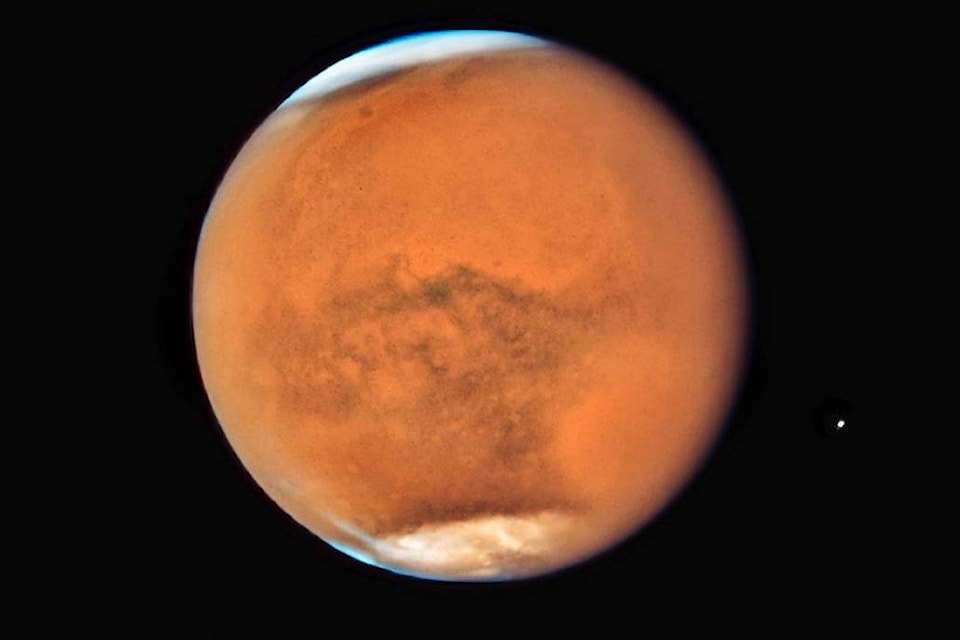By Samantha Bell
We have a couple of meteor showers this month.
The larger of the two is the Orionid Meteor Shower, which takes place from Oct. 2 to Nov. 7. This shower peaks in the predawn hours on Oct. 21 with an expected rate of 20 meteors per hour. Just look towards Orion and you will see meteors.
The Draconids Meteor Shower is normally a minor shower, but is expected to provide up to 10 meteors an hour this year because its parent comet (21P/Giacobini-Zinner) passed near the sun last month. This Draconids has a history of providing good meteor showers right after the comet passes the sun, so hopefully we have a good showing on the evening of Oct. 8 and morning of Oct. 9. Just look towards Draco in the north-northwest sky.
Mercury is lost behind the sun for most of October and will emerge low in west-southwest at dusk near the end of the month.
Venus lies low in the southwest and will disappear behind the sun by mid-October.
Jupiter can be found low in the southwest at sunset. It will stand to Venus’s upper left on Oct. 1, when both planets are at their highest for the month. The giant planet will sink as the month progresses, ending October near just above the horizon. The moon will pass close to Jupiter on Oct. 11.
Saturn appears high in the southern sky in early evening for all of October, though it will shift westward a bit during the month. Its height this month makes it a good time to take a look through binoculars or a telescope at the famous rings, which are tilted 27 degrees to our line of sight, allowing us to see a large amount of detail. Saturn will appear near the moon on Oct. 14.
Mars resides in the south in October and will rise a bit during the month. There is nothing like having a glowing reddish “star” staring down at you on Halloween to up the spooky factor. The red planet’s height makes this an ideal time to take a look through a telescope as there will be less atmospheric interference, at least from Earth — no guarantees about Mars’s weather cooperating. The size of the planet’s disk, as viewed through a telescope, will shrink a bit as the planet falls behind speedy Earth.
Neptune can be found in the southeast, lingering in Aquarius, but travelling ever so slightly westward. You will need binoculars or a telescope to confirm a sighting of this faint blue-gray world.
Uranus lingers in the east near the border between Pisces and Aries. The best viewing for this planet will take place on Oct. 23 when the planet stands opposite the sun from our view here on Earth. It will remain visible all night and can be spotted with sharp eyes from a dark site, but binoculars or a telescope make it easier. You will know that you have found this distant gas giant when you see its blue-green disk.
Don’t forget that the October 26th full moon is the Hunter’s Moon. So happy hunting.
